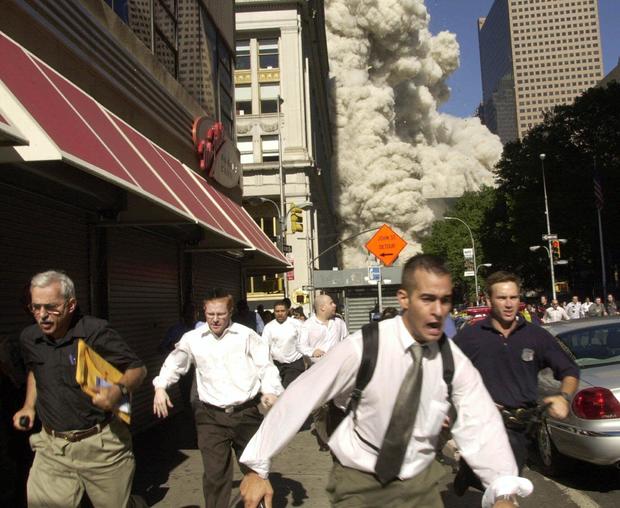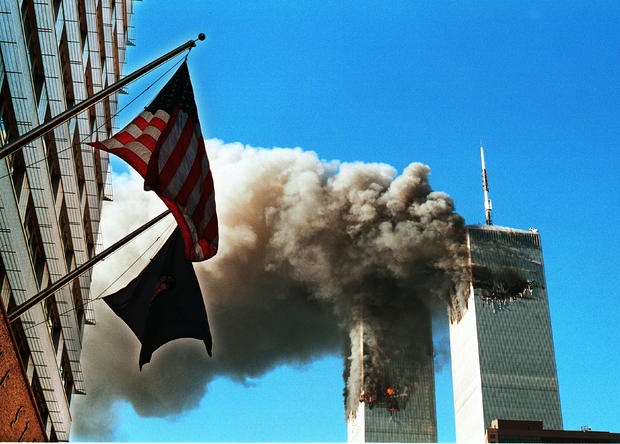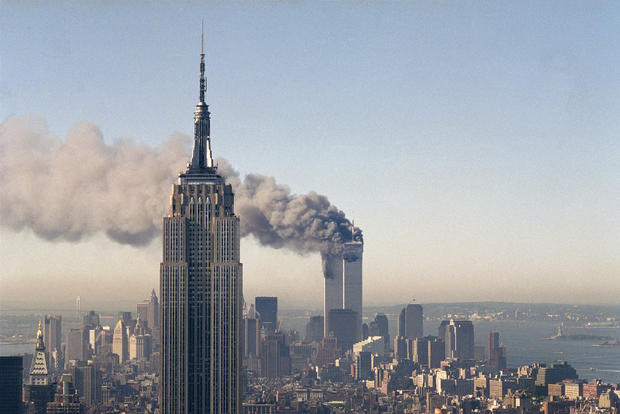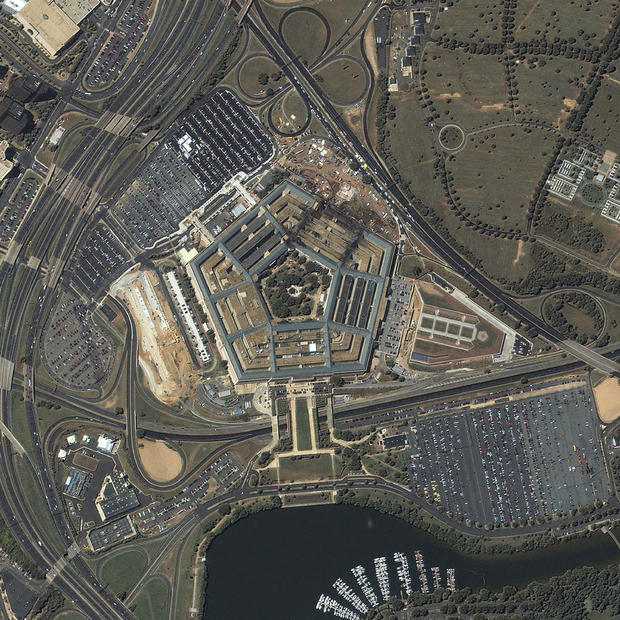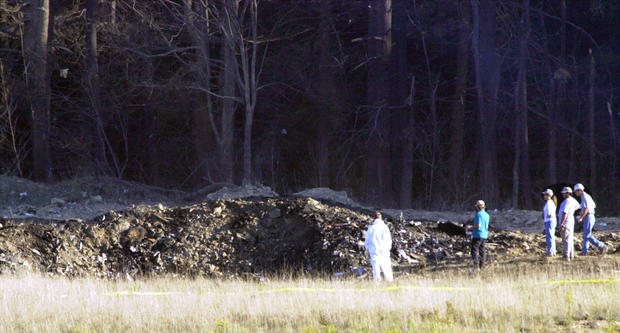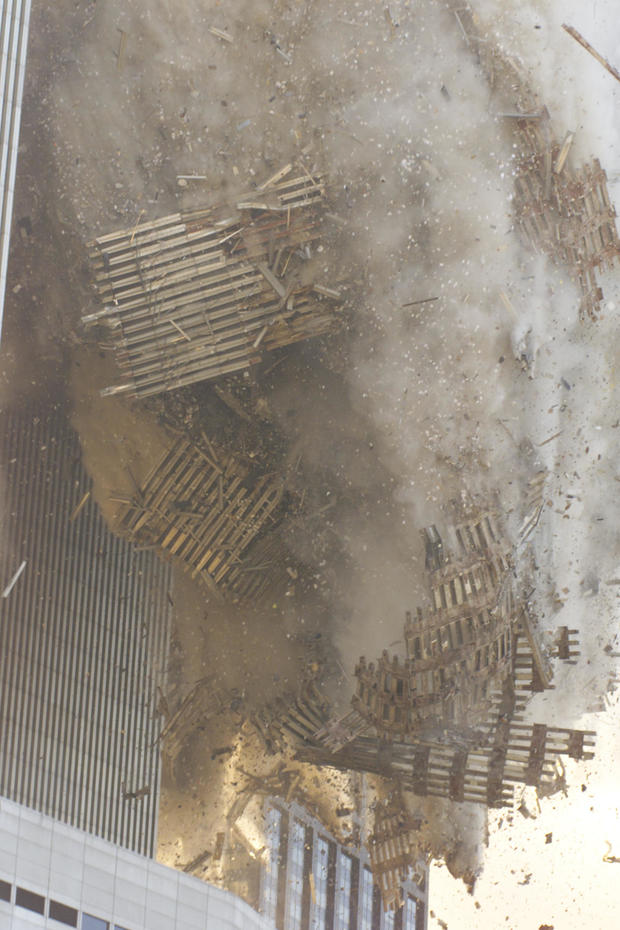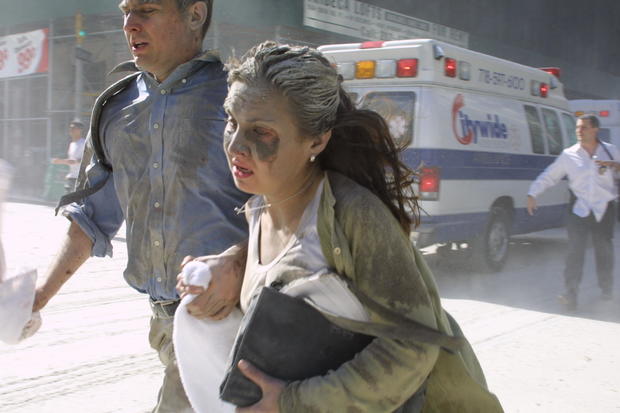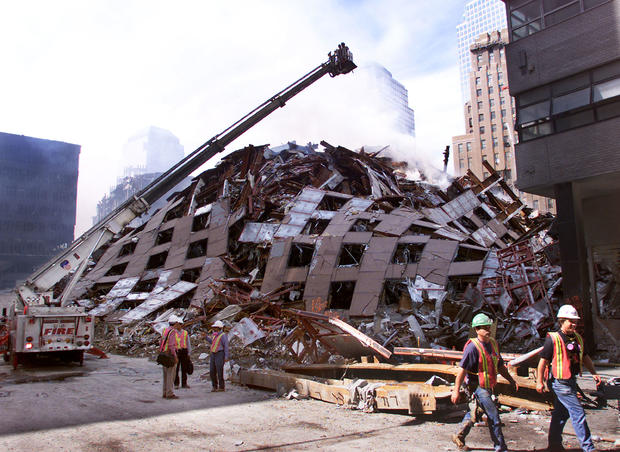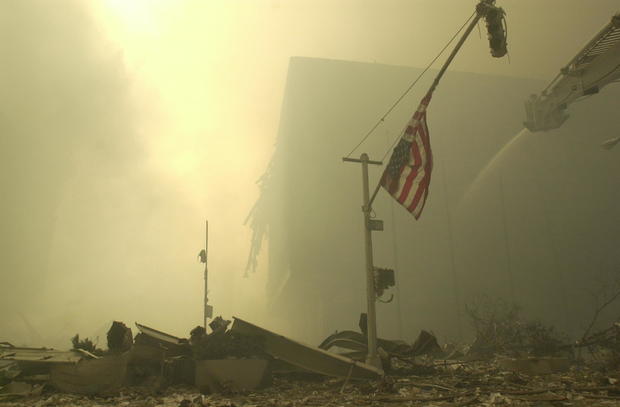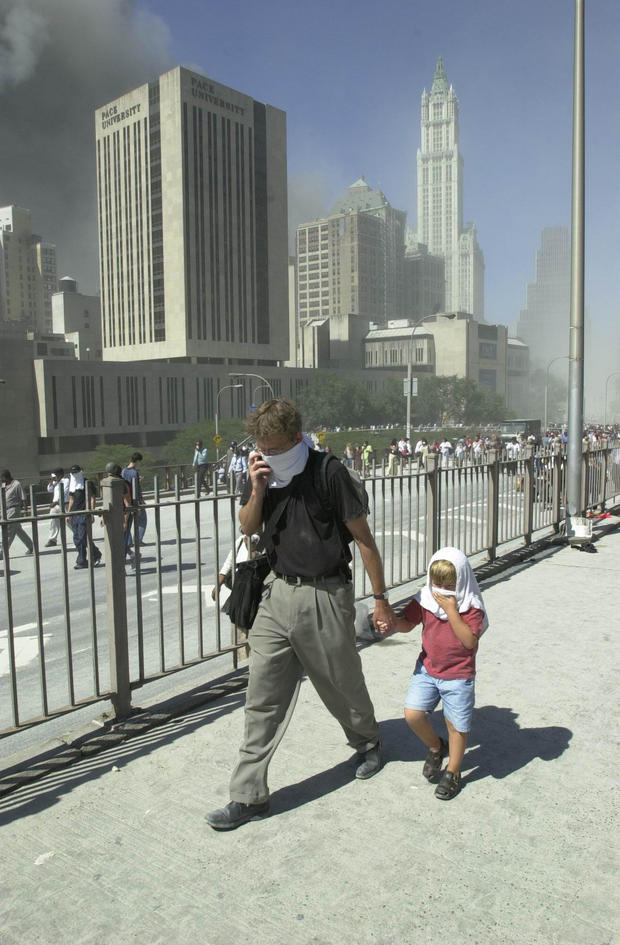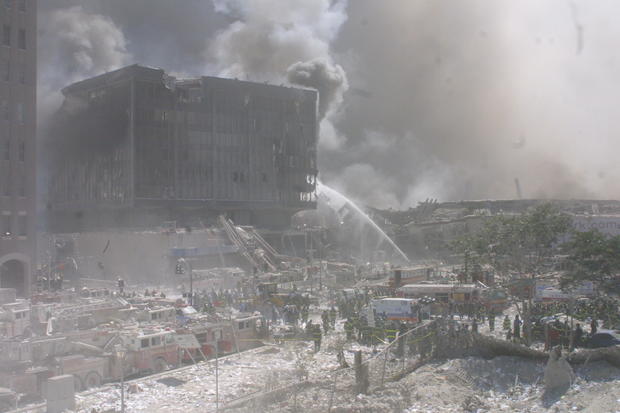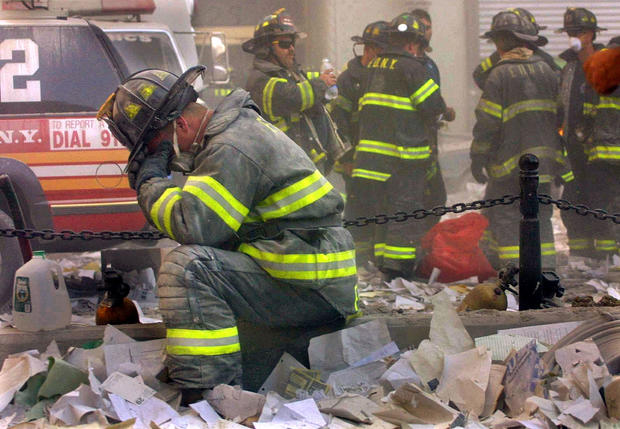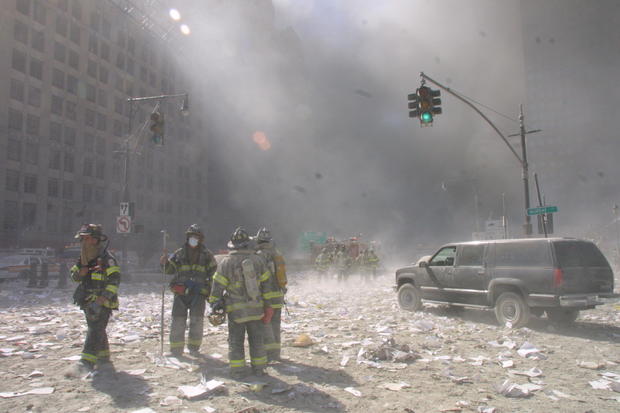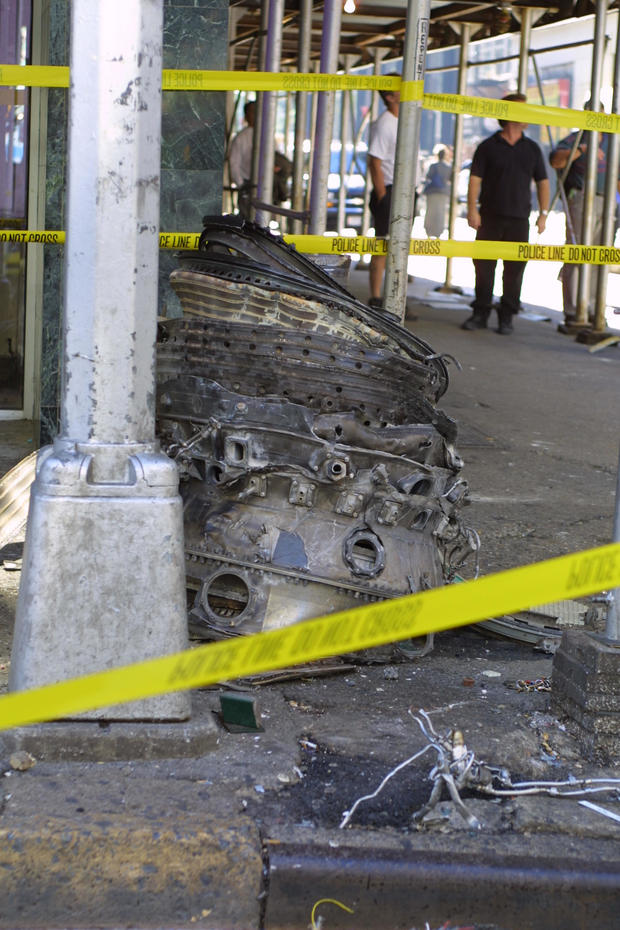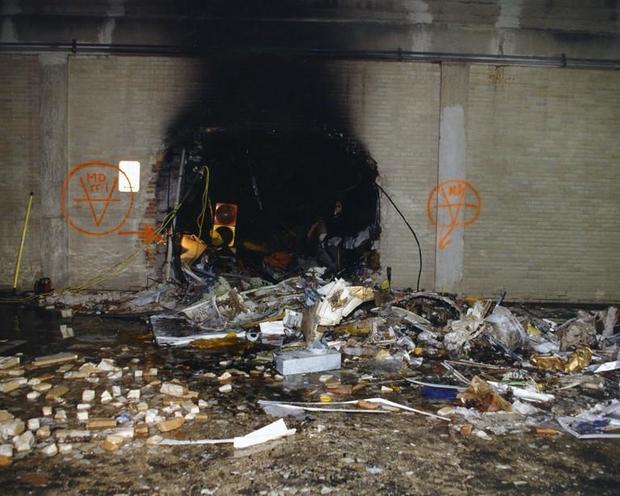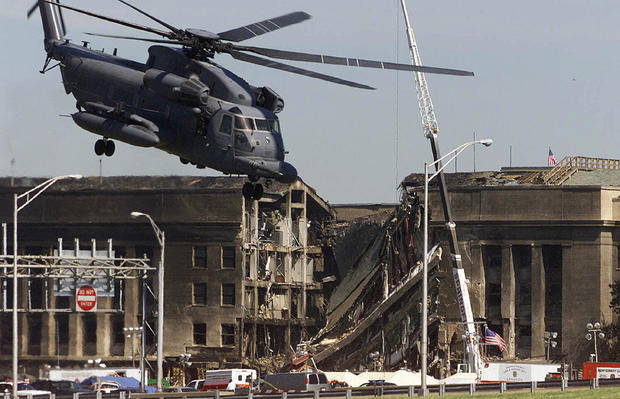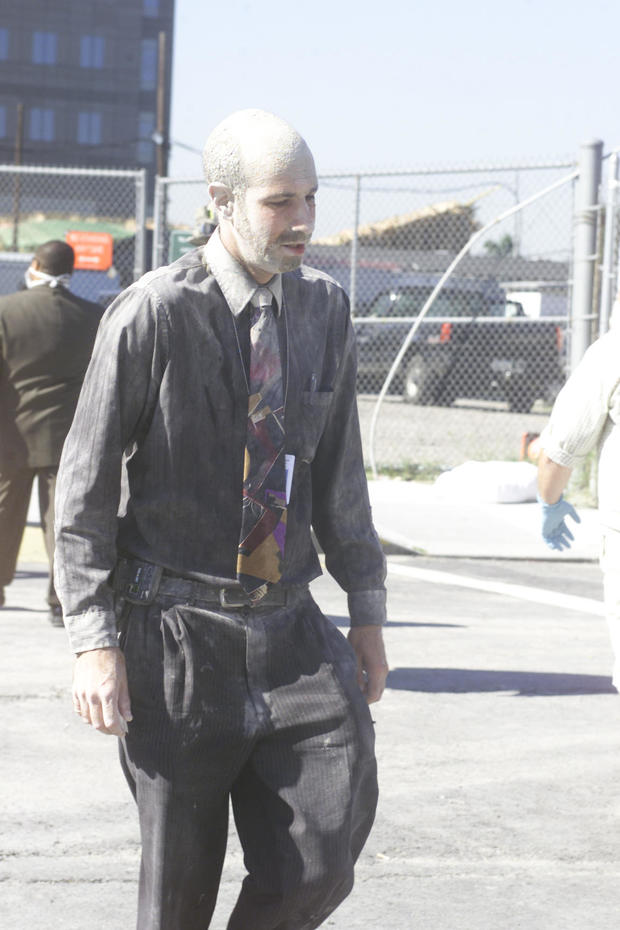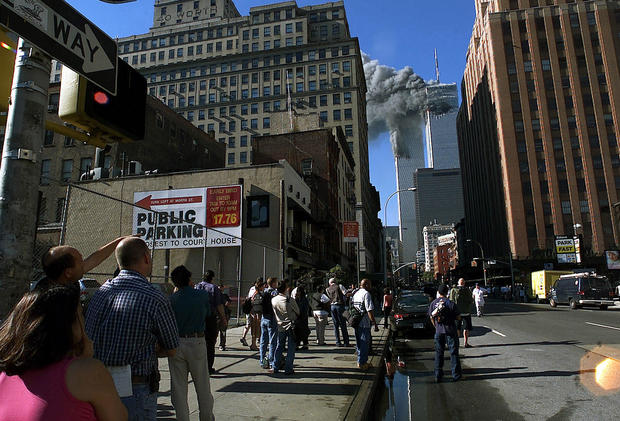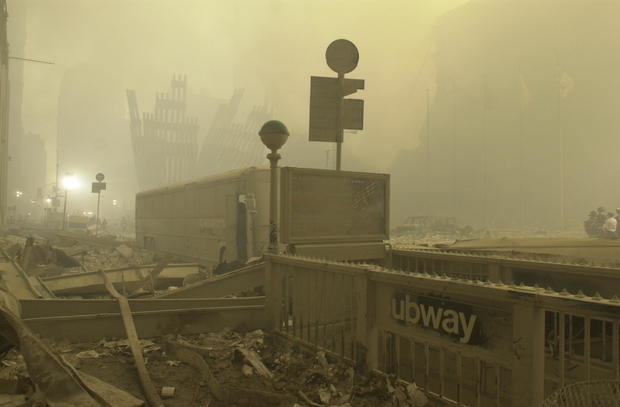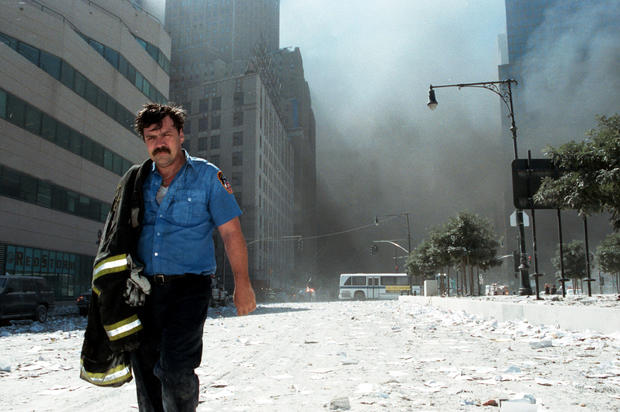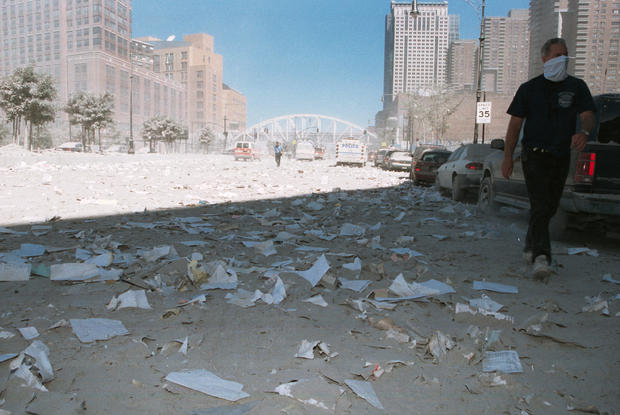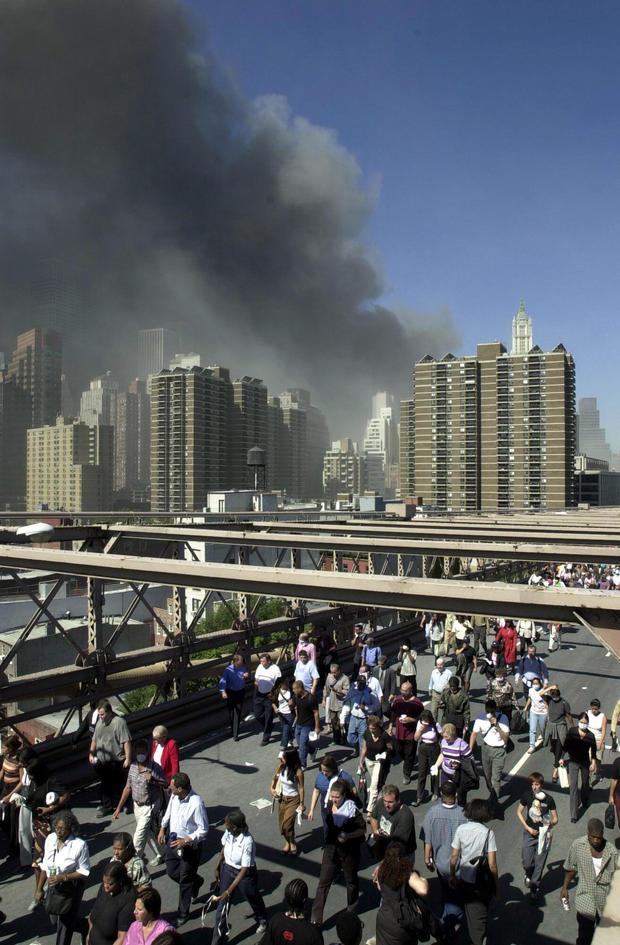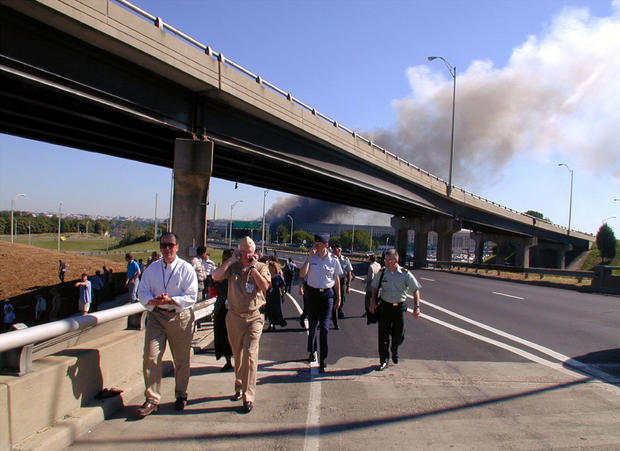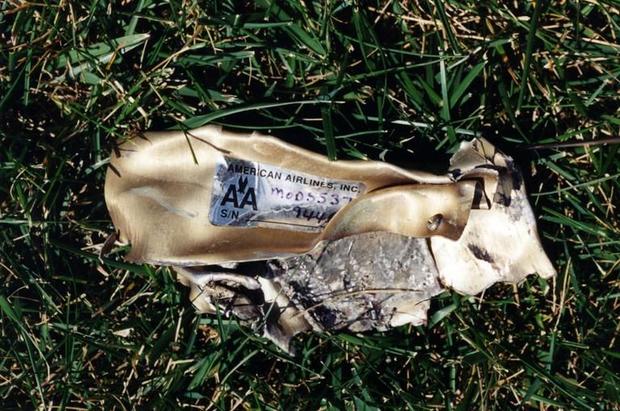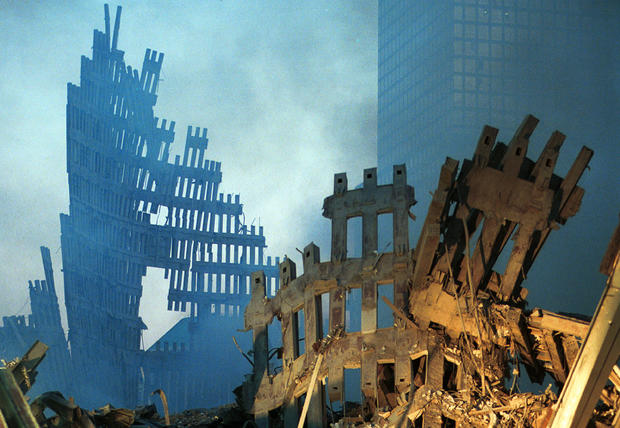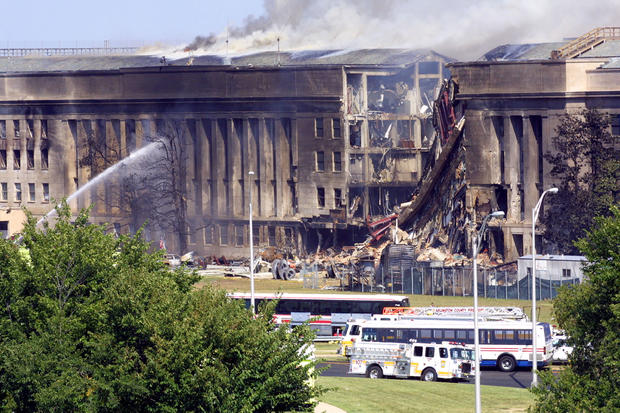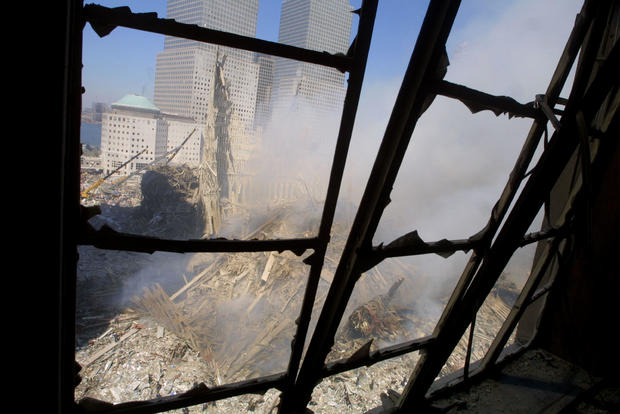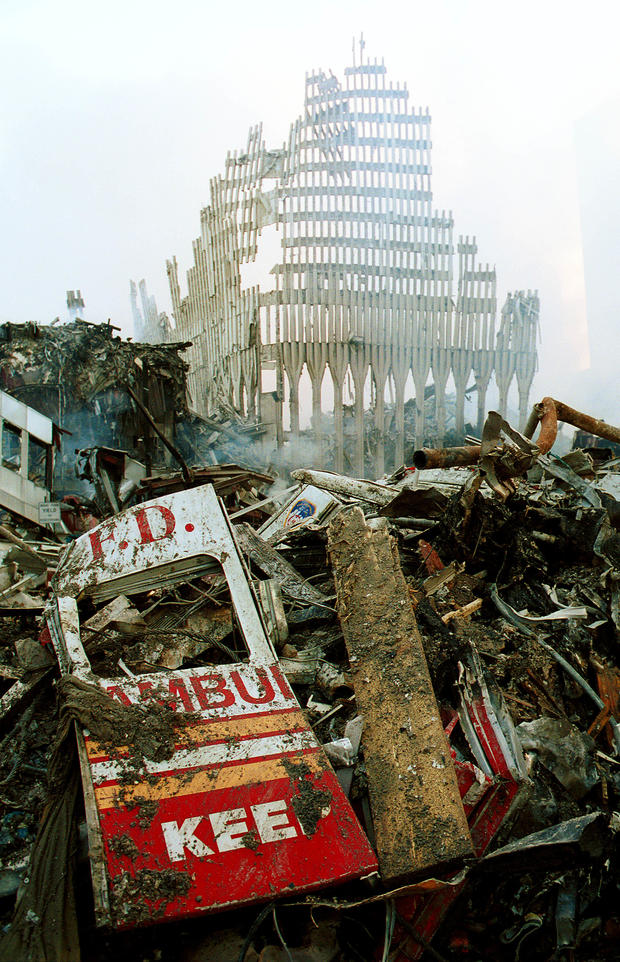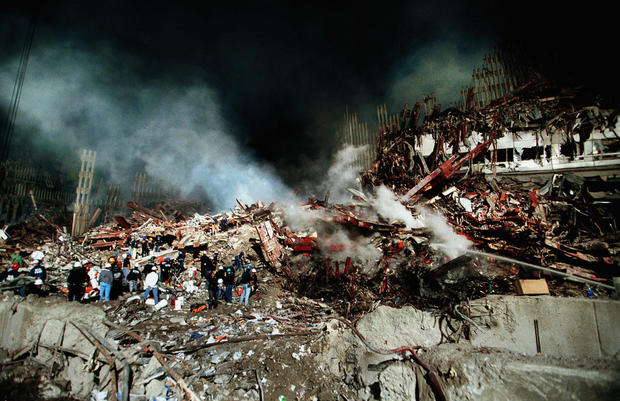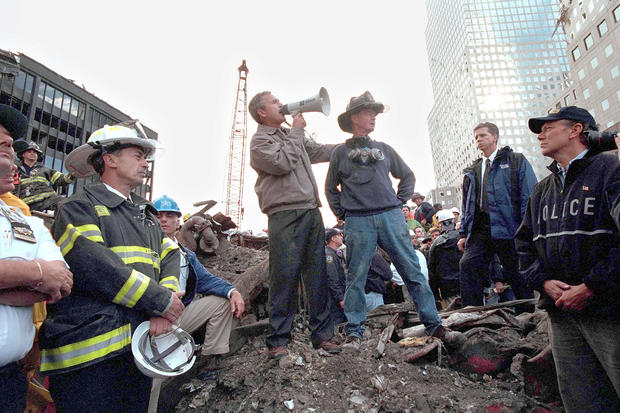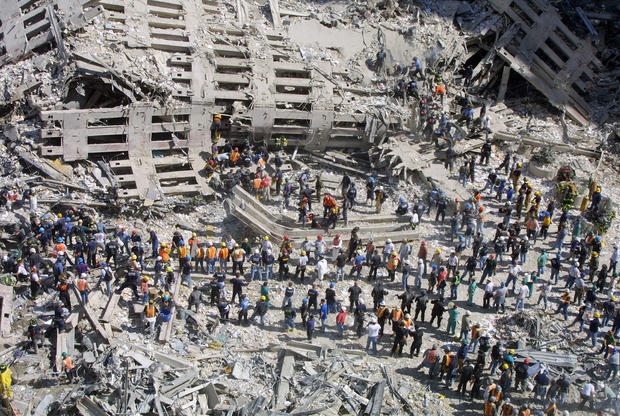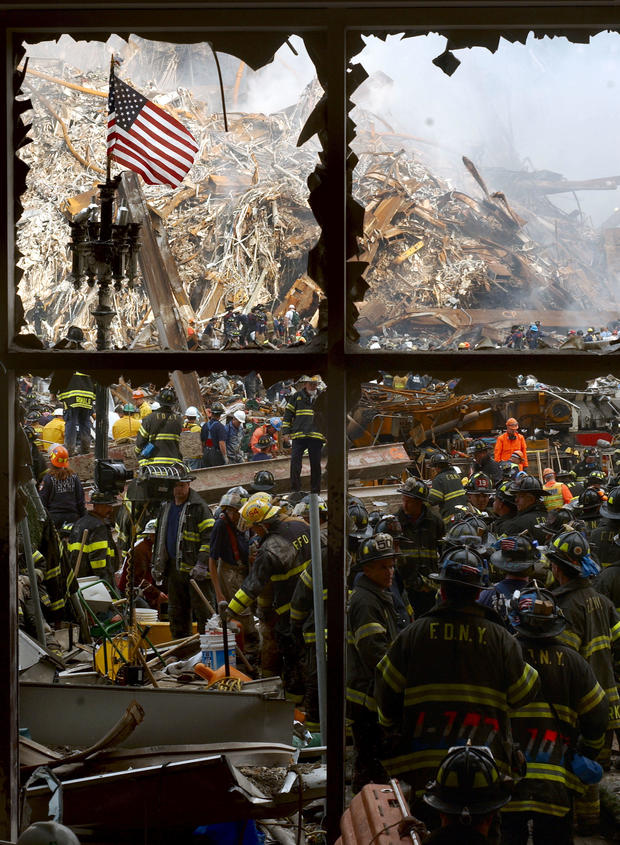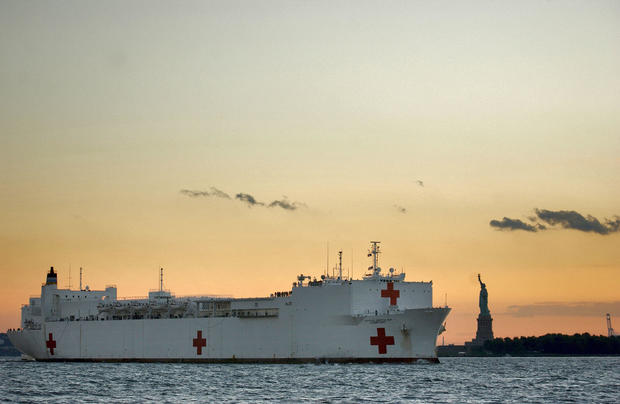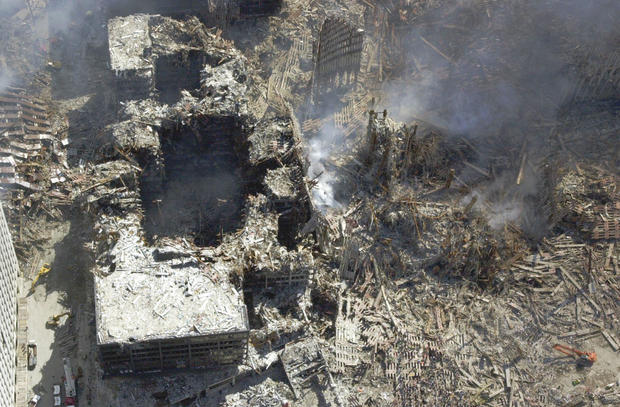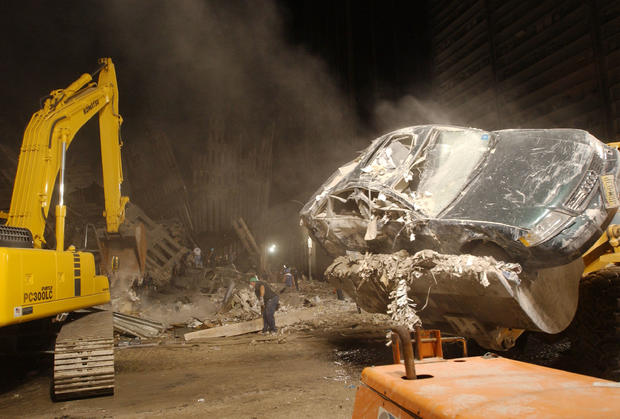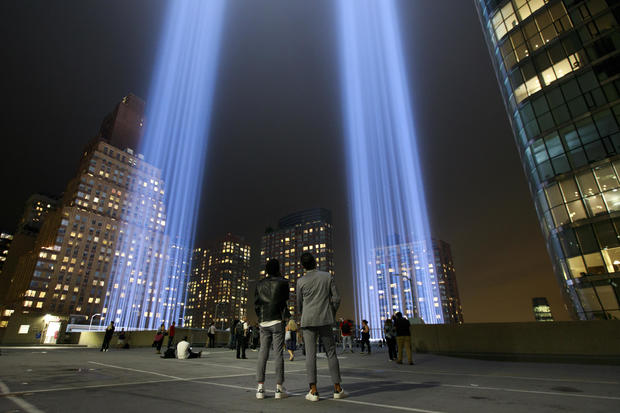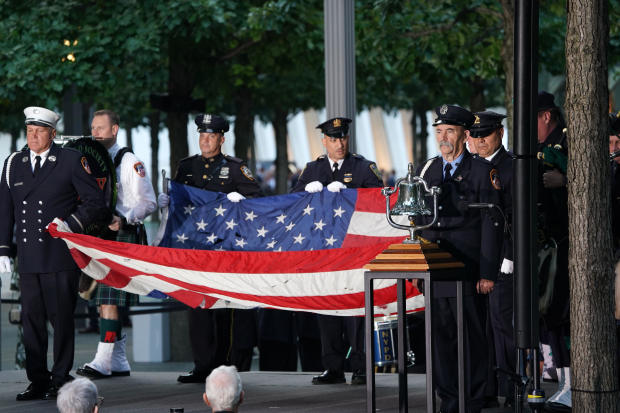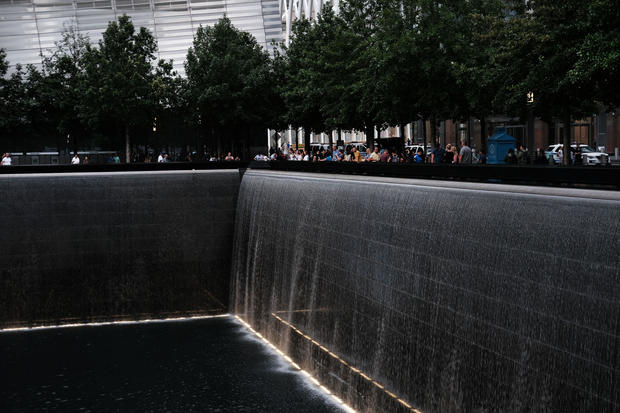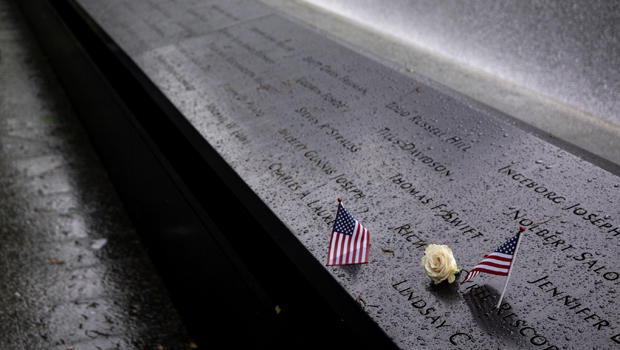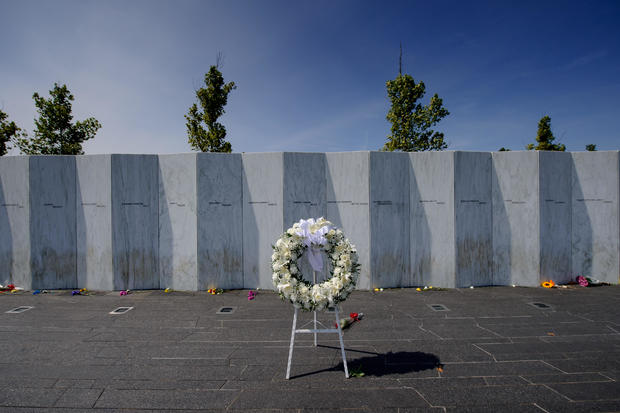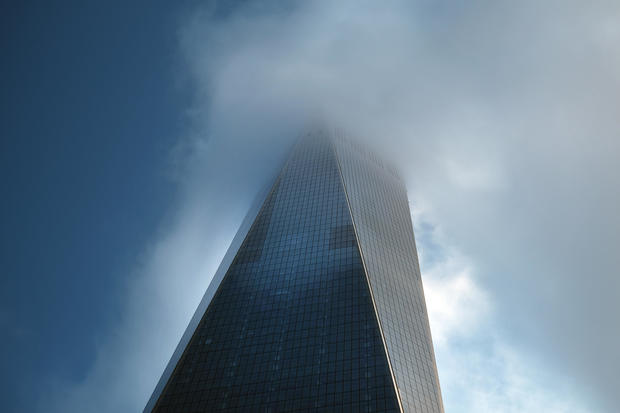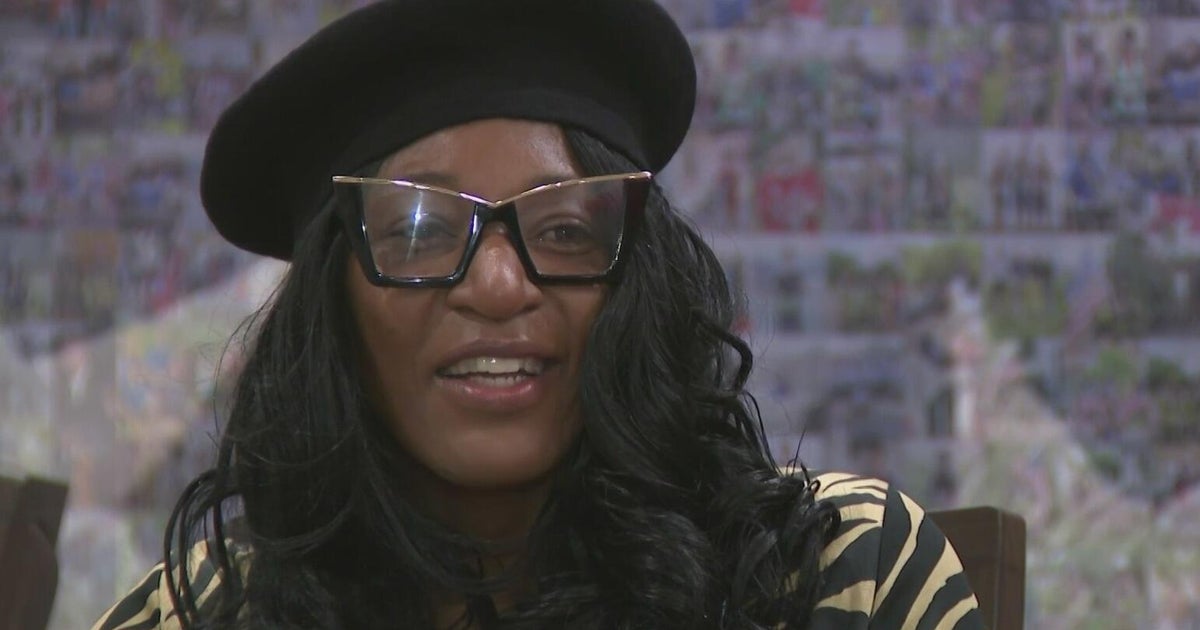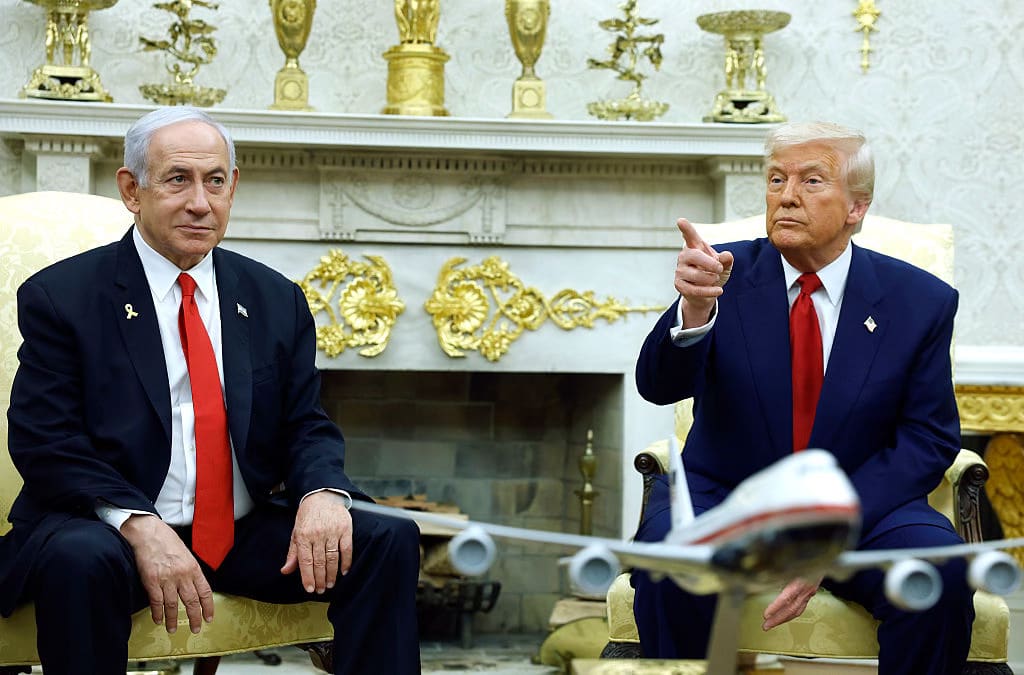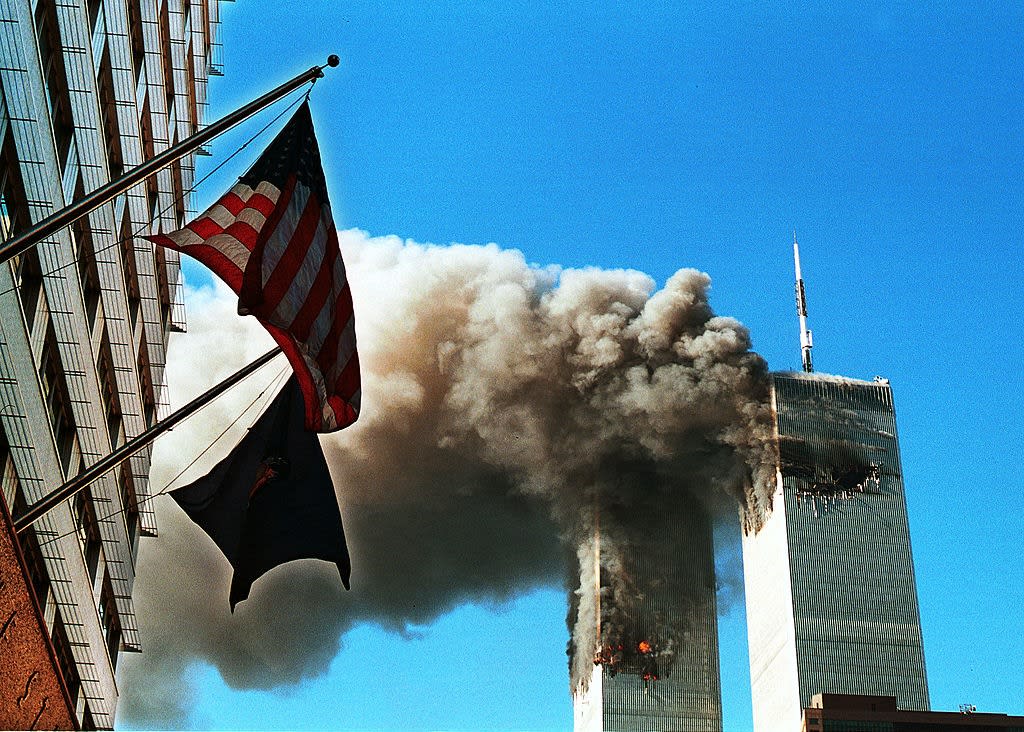Photos of 9/11 and its aftermath to mark the 20-year anniversary
On September 11, 2001, members of the Islamic extremist group al Qaeda coordinated four attacks using hijacked commercial airliners in the United States.
Two iconic towers fell. The Pentagon sustained major damage. Nearly 3,000 victims lost their lives. Countless more suffered immediate injuries and long-term health issues that are still being felt to this day.
The 9/11 attacks changed America, and the world, forever.
Here's what it looked like on the ground, from the streets of New York to the Pentagon to a field outside of a Pennsylvania town, from the point of view of people who were there.
The first attack
The first tower was struck at 8:46 a.m. on September 11, 2001.
Five attackers, armed with box cutters, crashed American Airlines Flight 11 into the north face of the north tower of the World Trade Center complex in lower Manhattan.
Minutes later, the south tower was hit by a second hijacked plane, United Airlines Flight 175.
View from above
Here is a view of the twin towers of the World Trade Center as they burned in the distance, seen behind the Empire State Building in New York City.
The terrible events of that day were watched live by millions of television viewers across the U.S. and around the world.
Scant details at first
Both planes had departed from Boston's Logan airport, bound for Los Angeles and carrying enough jet fuel for a transcontinental flight.
In the moments before each plane crashed, passengers reached out to friends and family via cellphone. A flight attendant reported that the hijackers were also armed with mace or pepper spray.
Coordinated attacks
Minutes after the second Boston flight departed, American Airlines Flight 77 took off from Washington Dulles International Airport. About 40 minutes later, that plane crashed into the west wall of the Pentagon.
Here's a satellite image of the Pentagon taken the following morning. The image shows extensive damage to the western side and interior rings of the building.
A fourth attack
The final hijacked plane, United Flight 93, took off from Newark International Airport.
Investigators believe the intended target was likely either the White House or the U.S. Capitol. But passengers, who learned of the other hijackings in cellphone calls to loved ones, attempted to rush the cockpit and retake control from the terrorists.
In this photo, emergency workers look at the crater created when that plane crashed in a field near Shanksville, Pennsylvania.
Collapse
Nearly an hour after being struck, the south tower of the World Trade Center collapsed. Less than 30 minutes later, the north tower also collapsed.
In all, 2,973 people were killed in the combined attacks that day, according to The 9/11 Commission Report.
A cloud of debris
This photo shows people running as the north tower of World Trade Center collapses, spewing a cloud of toxic dust and debris.
A subway station located under the tower complex was also destroyed.
Fleeing the scene
Thousands of people who were inside the twin towers managed to evacuate and survive the attacks.
Here, people flee the scene in lower Manhattan.
Surrounding buildings
Surrounding Manhattan buildings also suffered severe damage, including 7 World Trade Center, which eventually collapsed.
Here's what search, rescue and recovery operations looked like in front of that collapsed building on September 18, 2001.
A flag in the dust
This photo shows an American flag through the cloud of dust on the evening of September 11, 2001.
Media often referred to the area where the towers fell as ground zero. But rescue workers soon began using the term "The Pile" describe the 1.8 million tons of wreckage from the collapse of the World Trade Center.
Caring for children
A father and son are seen walking to the Brooklyn Bridge, which was used by thousands of pedestrians to get out of lower Manhattan following the World Trade Center attack.
More than 3,000 children lost a parent in the attacks.
Bravery
Firefighters battle the flames at ground zero.
On the day of the attacks, 343 New York City firefighters died in the twin towers. At least 200 more have since died from illnesses related to their work at the site.
Also killed that day were 37 officers from the Port Authority Police Department and 23 members of the NYPD.
Praying
Firefighter Gerard McGibbon, of Engine 283 in Brownsville, Brooklyn, prays after the World Trade Center buildings collapsed.
After the attacks, recovery and cleanup was a round-the-clock effort.
Covered in dust
Emergency crews survey the damage after the fall of the twin towers.
Dust reached as far as the Empire State Building, nearly 3 miles away.
What remained
A fallen piece of metal is seen on the ground in lower Manhattan after hijacked planes crashed into the World Trade Center.
Stunned survivor
A survivor sits outside the World Trade Center in the aftermath of the attack.
Many who fled the towers recounted hazardous journeys down dust-choked stairwells packed with people.
Near the towers
A firefighter is covered in dust after the collapse of the World Trade Center.
The city's fire department deployed half its units to the site in response to the attacks.
Firefighters
Firefighters and bystanders on the West Side Highway look south toward the remains of the World Trade Center on September 11, 2001.
Smoke continued to billow from the burning debris after the collapse.
View at the Pentagon
Meanwhile, rescue operations were also underway at the Pentagon, where 184 people died.
The building itself would be fully repaired within the year.
Into the night
Smoke rises from the Pentagon the night after the September 11 attack.
Secretary of Defense Donald Rumsfeld announced, "The Pentagon's functioning. It will be in business tomorrow." Pentagon employees returned to work at undamaged parts of the building the following day.
Inside the Pentagon
Damage inside the Pentagon is seen in this photo provided by the FBI.
Destroyed facade
Two days after the attacks, New York City firefighters look at the destroyed facade of the World Trade Center.
It was the single deadliest incident for firefighters in American history.
Surveying the damage
A military helicopter departs after dropping off personnel at the Pentagon on September 12, 2001.
125 Pentagon workers died in the attack, along with 59 people aboard the plane.
Lucky to be alive
A man is covered in debris after the collapse of the twin towers of the World Trade Center on September 11, 2001 in New York City.
Smoke in the sky
This is a view from West Broadway in lower Manhattan as people gaze up at the burning World Trade Center towers on September 11, 2001.
In the years after the attack, people who spent time near ground zero would begin to die as a result of long-term illnesses stemming from toxic dust.
Public transport in ruins
A destroyed Manhattan subway station entrance is seen near ground zero on the evening of September 12, 2001.
Rebuilding the subway stations would cost more than $4 billion.
Scene of disaster
An unidentified New York City firefighter walks near ground zero after the collapse of the twin towers on September 11, 2001.
A blanket of toxic dust
An unidentified man walks on an ash-covered street in lower Manhattan after the collapse of the twin towers.
In the years that followed, thousands of first responders and local residents would seek treatment for cancer and other health conditions stemming from their exposure to ground zero.
Buried in debris
Cars are buried under dust and debris in the aftermath of the World Trade Center attack.
Much of the toxic dust was pulverized concrete.
Crossing the bridge
In this photo, people walk across the Brooklyn Bridge from Manhattan to Brooklyn on September 11, 2001. By then, they'd seen the collapse of both World Trade Center towers.
Sickening smoke
An unidentified New York City firefighter walks away from ground zero after the collapse of the twin towers on September 11, 2001.
In the years following the attack, comedian and former "Daily Show" host Jon Stewart became a prominent advocate for better health care for the first responders. In 2019, Congress permanently extended the victims' compensation program.
Inside the Pentagon
Here's a view from inside the Pentagon after the attacks.
This handout image, provided by the Federal Bureau of Investigation, shows damage to an office. Fifty-five military personnel and 70 civilians were killed in the Pentagon that day.
After an evacuation
Military personnel move down highway I-395 while evacuating the Pentagon on September 11, 2001.
Plane debris up close
This photo from the FBI shows a piece of debris from American Airlines Flight 77 collected at the scene following the attack at the Pentagon on September 11, 2001.
People would continue to uncover pieces of plane debris more than a decade after the disaster.
Eerie aftermath
Days later, the smoke had yet to clear in lower Manhattan.
Here, early-morning light filters through the smoke and wreckage of the World Trade Center on September 13, 2001.
A look at the Pentagon damage
Smoke pours from the southwest E-ring of the Pentagon building in Arlington, Virginia, on September 11, 2001.
The government later released low-resolution security video of American Airlines Flight 77 crashing into the building.
Surrounding buildings
In New York, devastation extended beyond the twin towers. Other buildings suffered total destruction, including the St. Nicholas Greek Orthodox Church, Marriott World Trade Center, and a U.S. Customs building.
Here, wreckage of the World Trade Center is visible through the broken window of an apartment building.
Vehicle destroyed
Remnants of a New York City Fire Department vehicle lie in the wreckage of the World Trade Center on September 13, 2001.
Still more smoke
This is a view from the West Side Highway showing the still-smoldering debris of the World Trade Center on September 20, 2001.
Fears of additional collapses slowed recovery efforts for days following the attacks.
President Bush speaks
President George W. Bush speaks to rescue workers, firefighters and police officers from the rubble of ground zero on September 14, 2001.
"I can hear you," Mr. Bush said. "The rest of the world hears you. And the people who knocked these buildings down will hear from all of us soon."
Rescue efforts
Rescue workers sift through the wreckage of the World Trade Center on September 13, 2001.
Thousands of people showed up in the days following the attacks, eager to help with the rescue effort.
Several people, including first responders, were rescued from the rubble within a day of the attacks. But after that, no more survivors were found.
The flag in frame
New York City firefighters walk past the American flag as they work their way toward the heart of the devastation that was once the World Trade Center on September 14, 2001.
Hundreds of thousands of tons of debris were left at the site.
Bringing comfort
The U.S. Navy hospital ship USNS Comfort passes the Statue of Liberty on September 15, 2001 en route to Manhattan to provide assistance after the World Trade Center attack.
Health care workers onboard treated 561 people for cuts and other injuries. The operation was named Noble Eagle.
Giving direction
Retired fire chief Joseph Curry issues orders to rescue teams as they clear through debris at the World Trade Center site on September 14, 2001.
By December, the site was attracting so many visitors that a viewing platform was erected at Fulton Street, between Church Street and Broadway.
View from above
Smoke rises from the site of the World Trade Center attack on September 15, 2001.
Cleanup at the site finally ended in May 2002.
Frozen in time
Ash and debris cover an entrance to the World Financial Center three days after the 9/11 attacks in New York's financial district.
World Trade Center wreckage
Rescue workers clear debris from the remains of the destroyed World Trade Center towers on September 12, 2001.
The attacks left an estimated 70,000 people with symptoms of post-traumatic stress disorder.
Watching from safety
James Bahn, foreground, and Irena Musial watch from a building rooftop on Greenwich Street in New York City on September 12, 2001
The street below is filled with rescue workers and equipment.
Annual tribute in light
In the years since the attacks, New York has worked to commemorate the tragic day and honor the dead.
Here, people observe the "Tribute in Light" as it rises skyward in lower Manhattan on September 11, 2018.
Memorial ceremony
Flag-bearers take part in the annual commemoration ceremony at the 9/11 Memorial & Museum in lower Manhattan on September 11, 2019.
Each year on the anniversary, family members gather for a reading of the victims' names.
9/11 Memorial & Museum
A view of the 9/11 Memorial & Museum in New York City. Names of those who died are etched into the fountain.
Names and memories
Wind sprays mist over the rim of the south pool of the 9/11 Memorial in New York City in 2018. Roses are placed on the names of those memorialized marking their birthdays.
Shanksville memorial
A wreath is displayed at the Flight 93 National Memorial on the 16th anniversary of the attacks, September 11, 2017, in Shanksville, Pennsylvania.
Freedom Tower
Rising high over the site of the former twin towers, One World Trade Center, also known as the Freedom Tower, opened in 2014.
In this photo it is shrouded in clouds above the National September 11 Memorial during a commemoration ceremony for the victims on September 11, 2019.
